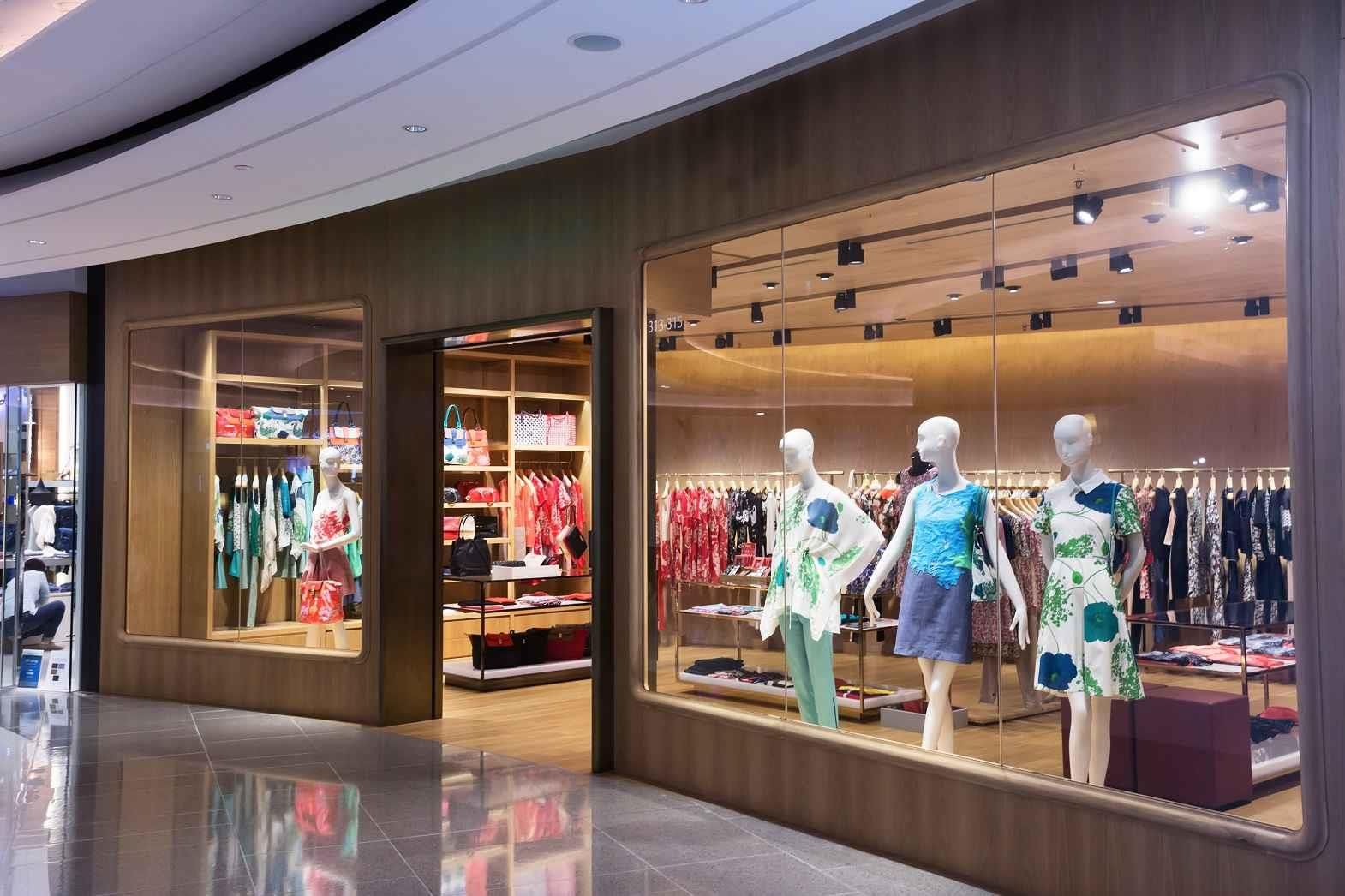The fashion industry, encompassing everything from global discount retailers to exclusive luxury brands, significantly drives the global economy. Fashion is one of the most challenging industries, heavily influenced by various trends, industrial shifts, and instability in the world economy. In response to the pressures of growth and cost efficiency, many brands have initiated a series of measures to enhance their speed to market and to incorporate sustainable innovation into their core product design, manufacturing, and supply chain processes.
Fashion has reached a turning point – both in business and perception. From sustainability concerns and inclusion challenges to the interchangeability of most brands today, the business of fashion retail requires a major overhaul. By 2026, it is anticipated that 24 per cent of retail transactions1 will occur online.
In the fast-paced world of fashion, maintaining relevance and competitiveness necessitates a deep understanding of the digital landscape. With the rise of e-commerce and evolving consumer behaviours, fashion retailers must adapt their strategies to prosper in the digital era.
In this article, we will delve into key fashion retail strategies that align with the digital revolution, while meeting the changing needs of tech-savvy consumers. Here are some fashion retail strategies that companies should adopt:
Embracing E-Commerce
The digital age has introduced a new era of shopping where convenience is paramount. E-commerce has become the preferred platform for consumers seeking a hassle-free shopping experience. Fashion retailers must establish a strong online presence, ensuring their websites are user-friendly and optimised for mobile devices. This enhances the customer experience and extends the brand’s reach beyond the confines of physical stores.
Therefore, investing in a seamless and secure online shopping platform is essential. Features such as straightforward navigation, quick checkout processes, and secure payment gateways contribute to a positive online shopping experience, encouraging customers to make repeat purchases.
Personalised Shopping Experience
In the digital age, consumers expect a shopping journey that is tailored to their preferences. Customers seek personalised experiences whether they shop on websites, in stores, on mobile devices, or on social media platforms, irrespective of the demographic targeted. While a majority of consumers would desire to have personalised experiences while shopping, many businesses are far from achieving this goal.
By utilising data analytics and artificial intelligence, fashion retailers can gain insights into customer behaviours and preferences. This data can be leveraged to create personalised recommendations, targeted marketing campaigns, and individualised shopping experiences.
Implementing technologies like machine learning allows retailers to analyse past purchases, browsing history, and social media engagement to understand each customer’s unique style. Offering personalised recommendations can enhance customer satisfaction and foster long-term loyalty.
Social Media Integration
Social media platforms have become essential tools for fashion retailers, enabling them to connect with their audience and boost sales. By leveraging popular platforms such as Instagram, Facebook, LinkedIn, and TikTok, retailers have the opportunity to showcase their latest collections, interact with customers, and foster a sense of community.
When social media is seamlessly integrated with e-commerce platforms, it enables retailers to enable direct purchases from social media posts, effectively bridging the gap between product discovery and purchase.
Influencer Marketing
Investing in influencer marketing is a highly effective strategy. This approach involves collaborating with influencers, who can provide access to their followers, thereby helping fashion brands reach a wider audience and establish credibility.
AR and Virtual Try-On
One of the challenges in online fashion retail is the inability of customers to physically try on clothes before purchasing. Augmented Reality (AR) technology offers a solution by enabling virtual try-on experiences. Retailers can implement AR features on their websites or mobile apps, allowing customers to see how a garment looks on them virtually.
Virtual try-ons not only enhance the online shopping experience but also reduce the rate of returns, as customers gain a more accurate representation of the product. This technology creates a bridge between the digital and physical shopping experiences, adding a fun and interactive element to online fashion retail.
Crisis Management
Navigating unforeseen issues in the fashion retail business requires effective crisis management. Retailers need to have robust backup plans in place for situations like supply chain delays, economic downturns, or public relations catastrophes. To ensure resilience and maintain customer trust during challenging times, crisis management necessitates prompt decision-making, open communication, and flexible adaptability.
Sustainable and Ethical Practices
In the digital age, consumers are increasingly aware of the environmental and ethical impact of their purchases. Fashion retailers need to adopt sustainable and ethical practices, not just as a response to consumer demand, but also as a commitment to responsible business operations.
Implementing eco-friendly materials, reducing waste, and ensuring fair labour practices in the supply chain contribute to a positive brand image. Transparently communicating these practices through digital channels helps build trust with consumers who prioritise sustainability.
Mobile Optimisation
As mobile devices become the primary means of online interaction, fashion retailers must prioritise mobile optimisation. Ensuring that websites and apps are responsive, load quickly, and provide a seamless user experience on various devices is crucial for capturing the mobile-savvy consumer market.
Mobile apps can also be leveraged to offer exclusive deals, personalised content, and loyalty programmes, encouraging customers to engage more frequently with the brand through their smartphones.
Adapting to Global Trends
For fashion retailers aiming for sustained success, staying abreast of global trends is essential, including those related to fashion retailing. Staying ahead of trends—whether they be in fashion, culture, or technology—enables merchants to anticipate customer needs and adjust their strategies accordingly. Retailers can respond proactively to the changing landscape of the fashion industry by using trend forecasting, conducting regular market research, and adopting a flexible business approach.
Inventory Management
Effective inventory management is a key component in the success of fashion retail. The main challenges include reducing excess inventory, optimising stock levels, and achieving the right balance between supply and demand. Implementing advanced inventory management systems enables the reduction of stockouts and overstock situations, precise demand forecasting, and the use of data analytics. Prompt inventory turnover ensures that consumer expectations are met with a current and fresh product range.
Data Security and Privacy
With the increasing reliance on digital platforms, protecting customer data becomes paramount. Fashion firms can demonstrate their commitment to ethical and responsible business practices by prioritising data privacy. Fashion retailers must invest in robust cybersecurity measures to protect sensitive information, such as personal details and payment data. Establishing trust in the digital space is crucial for customer loyalty and satisfaction.
Sustainable Practices in Fashion Retail
Incorporating sustainable practices into fashion retail is essential in response to growing environmental concerns. Employing sustainable production methods, ethical sourcing, and eco-friendly materials not only reflects modern values but also appeals to eco-conscious customers. Retailers can showcase their commitment to sustainability by using eco-friendly packaging, engaging in open communication, and implementing programmes that reduce their operational impact on the environment.
Collaborations and Partnerships
The reach and influence of a fashion retailer can be expanded through strategic partnerships and collaborations. Collaborating with influencers, designers, or other companies can increase awareness, attract new clients, and provide fresh perspectives. Collaborations, whether in the form of a joint marketing campaign or a limited-edition collection, help differentiate brands and create an aura of exclusivity that enhances consumer engagement.
Conclusion
In the digital age, fashion retailers must navigate a rapidly evolving landscape by embracing e-commerce, personalising the shopping experience, integrating social media, adopting AR, promoting sustainable practices, optimising for mobile, and prioritising data security. By attuning to these strategies, fashion brands can not only survive but also thrive in the dynamic and competitive world of digital retail. Adapting to the changing needs and preferences of consumers ensures a lasting and meaningful connection between the brand and its audience in the exciting era of digital fashion retail.


 (1)20240730094415.jpg)







Comments